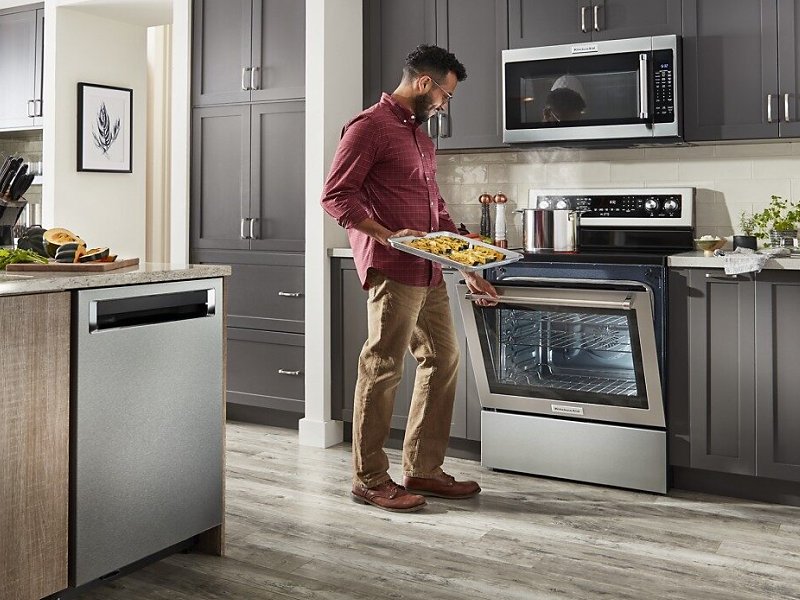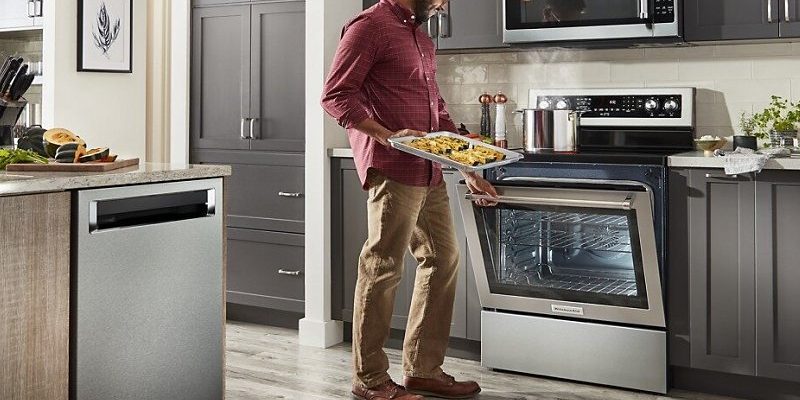
Honestly, this comes up more often than you’d think—especially with big-ticket KitchenAid appliances that are built to last. Warranty stuff can feel like reading a foreign language. It’s full of codes, policies, and fine print that seem more complicated than baking a soufflé. So, grab your metaphorical coffee, and let’s break this down in plain English. We’ll look at exactly how KitchenAid warranties work, what happens if you’re buying or selling secondhand, and what options you actually have.
How KitchenAid Appliance Warranties Work
Let’s start at the beginning: what does a typical KitchenAid warranty actually cover? Most KitchenAid kitchen appliances—think stand mixers, refrigerators, dishwashers, and blenders—come with a *limited manufacturer’s warranty*. This warranty is KitchenAid’s way of saying, “We stand by our stuff. If something goes wrong early on and it’s our fault, we’ll fix or replace it.”
Usually, you’ll see a coverage period somewhere between **one and five years**, depending on the appliance. The warranty kicks in on the date of the *original purchase* from an authorized dealer. It covers issues caused by defects in material or workmanship—think something inside the stand mixer breaking for no good reason, not you accidentally cracking the mixing bowl by dropping it in the sink.
Here’s the thing: most warranties don’t cover normal wear and tear, accidental damage, or problems caused by using the appliance in a way it wasn’t designed for. So running your mixer on turbo speed with bread dough every single day might wear it out, but that isn’t covered. The fine print also usually excludes “acts of God,” like if a lightning strike fries your blender.
KitchenAid Warranty: Is It Transferable to a New Owner?
Now for the big question: if you buy (or receive) a used KitchenAid appliance, can you transfer the warranty? This is where things get a bit tricky—and the news might not be what you’re hoping for.
According to KitchenAid’s official policy in most countries, *the limited warranty is only valid for the original purchaser*. That means if your friend gives you her old KitchenAid mixer, or you buy a secondhand one from an online seller, the warranty technically won’t transfer over to you. The coverage stays with the first buyer and can’t be “synced up” to a new name or address in the company’s database.
You might be wondering, “But what if I have the receipt?” Even if the original owner hands you every bit of paperwork—box, manuals, proof of purchase—the warranty still only applies to whoever bought it new. The KitchenAid team checks the registration info, so unless you’re the name on that dotted line, you’d likely run into trouble if trying to make a warranty claim.
Pro tip: If you’re buying any used KitchenAid appliance, don’t count on having warranty protection. Think of it as a bit like buying a car “as is”—you’re on your own for repairs.
Why Doesn’t KitchenAid Allow Warranty Transfers?
It can feel a little unfair, right? So why doesn’t KitchenAid let you transfer the warranty? The answer comes down to control and accountability. From their side, warranties are designed as a promise to the *original buyer*—the person who bought the appliance new from an authorized retailer.
Allowing unlimited transfers would make things more complicated for KitchenAid’s support team. They couldn’t easily verify who the “real” owner is, especially if a product has changed hands three or four times. There’s also the risk of fraud (think someone resetting the registration or faking ownership info just to get repairs).
Plus, KitchenAid wants to encourage customers to buy new products directly or from trusted retailers—where they can control the experience and ensure you’re getting the real deal, not a counterfeit or an altered appliance. In a way, it’s their way of troubleshooting customer issues efficiently, without chasing down a tangled web of previous owners.
What If You Inherit or Receive a KitchenAid as a Gift?
Here’s where the rules get a little fuzzy. Let me explain: if you’re given a KitchenAid appliance *brand new, still in the box*—say, as a wedding or housewarming gift—the warranty is usually still valid. That’s because the original purchaser can register the warranty in your name *as long as it hasn’t been used yet* and you have the original proof of purchase.
But once the appliance has been used, or if you’re the second owner buying it secondhand, the coverage doesn’t follow you. So, if grandma buys you a brand-new mixer for your birthday, you’re all set. But if you get her trusty old stand mixer she’s used for years, you’re outside the warranty.
Honestly, it’s a small but important difference. The lesson: *new, unused appliances given as gifts are fine; used or secondhand appliances aren’t covered by the original warranty, no matter how you got them.*
Common Misunderstandings About Transferring KitchenAid Warranties
You might hear stories online about people successfully transferring a KitchenAid warranty. Sometimes, brand reps or customer service agents have made one-time exceptions if the purchase was extremely recent, the documentation was airtight, or the support person simply wanted to help out. But these cases are rare and not something you should count on.
Another big misconception is that registering an old appliance under your own name somehow resets or syncs the warranty. It doesn’t. Registration is important for tracking purposes and to receive updates or recall info, but it doesn’t extend or transfer warranty coverage. The “clock” on the warranty starts ticking for the original buyer and stops after the coverage window, no matter who’s using the appliance now.
Quick example: You buy a used KitchenAid stand mixer, register it online, and get a confirmation email. This doesn’t mean the warranty is now in your name. It just means KitchenAid has your info if they ever need to reach you.
Alternatives If You Buy a Used KitchenAid Appliance
So, you found an amazing deal on a used KitchenAid appliance and the warranty doesn’t transfer. What can you do? There are still a few ways to protect yourself and keep your appliance running smoothly:
- Ask about the appliance’s history. Check if it’s had any previous repairs or problems. A well-cared-for mixer or blender is less likely to give you trouble.
- Look for reputable sellers. Some stores or certified refurbishers offer their own coverage or return policy, even for secondhand KitchenAid appliances. It’s not the same as the manufacturer’s warranty, but it’s better than nothing.
- Consider third-party appliance insurance or protection plans. Some companies offer coverage for used appliances, though the cost may not be worth it for every item.
- Keep up with regular maintenance. Simple steps like cleaning the mixer head, checking the blender’s seals, or descaling your dishwasher can add years to its life—and save you from troubleshooting big repairs down the line.
Of course, there’s always the DIY route. Part of the charm of KitchenAid products is how many replacement parts and how much troubleshooting info you can find online. If a gasket or beater breaks, you can often find a fix yourself.
What About Extended Warranties or Service Plans?
Now, you might be thinking: “Can I just buy an extended warranty or service plan if I pick up a secondhand KitchenAid appliance?” Here’s the reality—KitchenAid’s own extended protection plans generally have the *same rules* as the standard warranty: they apply *only to the original purchaser* of a new appliance.
Some big-box retailers or appliance stores might offer their own coverage or service contracts, and those sometimes can be transferred if you follow their rules closely. Always read the fine print. Usually, the clock starts when the product is first purchased new, and in most cases, the plan is tied to the original owner—not whoever ends up using the appliance later.
If you see an offer for an “aftermarket” warranty (from a third-party website, for example), make sure it’s legitimate before handing over any cash. Some are reliable, but many have strict rules, limits on the types of repairs, or simply aren’t worth the cost. Again, don’t expect miracles here—protection is best when the product is new.
Comparing KitchenAid to Other Brands’ Warranty Policies
You might want to know: do other appliance brands handle warranty transfers differently? The quick answer: *most don’t*. Whirlpool, GE, Samsung, and LG all have similar policies—warranties usually can’t be transferred once the appliance changes hands.
Some smaller brands, or high-end companies, occasionally allow for limited transfers. But in the world of everyday kitchen appliances, it’s pretty standard that the warranty sticks with the original buyer only. That’s why so many people choose to buy new from authorized dealers if warranty protection matters to them.
It’s a good reminder: always check the paperwork *before* you buy, whether it’s a KitchenAid, another big brand, or even a “universal” or off-brand appliance. The fine print can make a big difference.
Wrapping It All Up: What To Remember About KitchenAid Warranty Transfers
If you’re standing in a friend’s kitchen, eyeing that gorgeous cherry-red KitchenAid mixer, here’s what you need to know: the original warranty sticks to the first buyer and doesn’t follow the appliance if it changes hands. No amount of code-breaking, registration resets, or clever hacks will sync that warranty to you as the new owner.
If you’re buying or inheriting a secondhand KitchenAid appliance, go in with your eyes open. Don’t expect warranty coverage—but also don’t let that stop you from enjoying a high-quality appliance that could last for years with just a little maintenance and care. And if you’re gifting a brand-new, unused KitchenAid, make sure the warranty paperwork goes in the box.
In the world of warranties, it’s always better to know before you buy. Hopefully, you’re now ready to pair your kitchen curiosity with solid, practical knowledge—no troubleshooting required.
